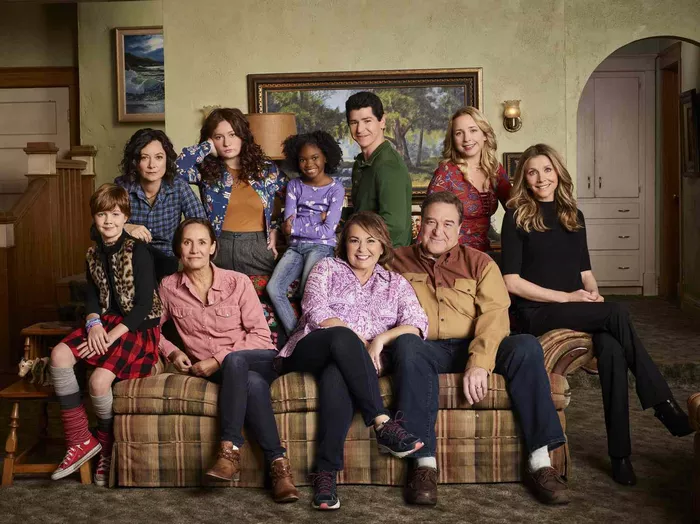The departure of a central character can often pose significant challenges for a long-running television series, forcing creators and showrunners to navigate uncharted territory in an effort to sustain the show’s momentum and appeal. When faced with the sudden need to address Roseanne Barr’s absence from The Conners, the creators initially contemplated the possibility of replacing her character with another central figure. However, as the implications of this decision became increasingly apparent, the show’s creative team swiftly recognized the inherent flaws and pitfalls of this approach, leading to a pivotal decision that would shape the future trajectory of the series. Reflecting on the early stages of The Conners’ development and the considerations surrounding the original Roseanne replacement idea provides insight into the complexities of maintaining continuity and narrative cohesion in the face of unexpected challenges and pivotal character changes.
I. The Conners’ Evolution from Roseanne’s Revival: Navigating the Aftermath of a Departure
The Conners emerged as a direct continuation of the narrative arc established in the revival of Roseanne’s season 10, seamlessly picking up the story mere days after the original series’ conclusion. The sudden departure of Roseanne Barr created a significant narrative vacuum that required careful navigation and thoughtful consideration. In response to this pivotal challenge, the show’s creators grappled with the idea of introducing a new central character to fill the void left by Roseanne’s absence. While this approach initially seemed viable, the inherent complexities and nuances of Roseanne’s character made it increasingly apparent that a mere replacement would not suffice, necessitating a more comprehensive and nuanced approach to maintain the series’ integrity and authenticity.
II. The Darlene Dilemma: Assessing the Challenges of a Singular Protagonist
Amidst the initial considerations for a potential replacement for Roseanne, the character of Darlene emerged as a strong candidate to assume the mantle of the series’ central protagonist. However, as the show’s creative team delved deeper into the implications of this decision, the challenges and limitations associated with a singular protagonist became increasingly evident. Darlene’s inherent cynicism and morose outlook, while integral to the fabric of the show’s narrative, highlighted the need for a more inclusive and comprehensive portrayal of the Conner family dynamic. The complexities of Darlene’s character, coupled with the interwoven relationships and dynamics within the Conner household, underscored the necessity of prioritizing the holistic representation of the family unit, ensuring a balanced and multifaceted exploration of the characters’ individual growth and collective evolution.
III. Embracing the Power of Ensemble Storytelling: Prioritizing the Conner Family Unit
As the creators of The Conners grappled with the challenges posed by the original Roseanne replacement idea, a fundamental shift in the show’s narrative approach became increasingly apparent. Recognizing the inherent strength and appeal of the Conner family unit as a cohesive ensemble, the decision to prioritize the holistic representation of the family’s dynamic interactions and interpersonal relationships emerged as a pivotal turning point in the series’ development. By embracing the power of ensemble storytelling, the show’s creative team sought to capture the authentic essence of the Conner family’s journey, delving into the intricacies of their shared experiences, triumphs, and tribulations. This shift in narrative focus allowed for a more nuanced exploration of the characters’ individual growth and personal narratives, fostering a deeper connection with audiences and underscoring the enduring appeal of the Conners’ relatable and authentic portrayal of familial bonds and everyday challenges.
IV. Lessons Learned: The Importance of Narrative Cohesion and Character Authenticity
The Conners’ decision to abandon the original Roseanne replacement idea serves as a poignant reminder of the importance of narrative cohesion and character authenticity in the development of a compelling and engaging television series. By prioritizing the holistic representation of the Conner family unit and embracing the power of ensemble storytelling, the show’s creators were able to navigate the challenges posed by Roseanne’s absence, fostering a narrative landscape that honors the legacy of the original series while charting a new course for its beloved characters. The evolution of The Conners stands as a testament to the resilience of storytelling and the enduring power of familial bonds, underscoring the show’s continued commitment to authenticity, relatability, and the exploration of the human experience in all its complexities and nuances. As the series continues to unfold, audiences remain invested in the Conner family’s journey, eager to witness the continued evolution and growth of its characters in the ever-changing landscape of modern television storytelling.


